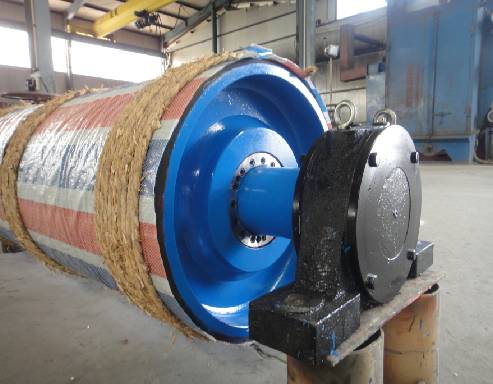 Afrikaans
Afrikaans  Albanian
Albanian  Amharic
Amharic  Arabic
Arabic  Armenian
Armenian  Azerbaijani
Azerbaijani  Basque
Basque  Belarusian
Belarusian  Bengali
Bengali  Bosnian
Bosnian  Bulgarian
Bulgarian  Catalan
Catalan  Cebuano
Cebuano  Corsican
Corsican  Croatian
Croatian  Czech
Czech  Danish
Danish  Dutch
Dutch  English
English  Esperanto
Esperanto  Estonian
Estonian  Finnish
Finnish  French
French  Frisian
Frisian  Galician
Galician  Georgian
Georgian  German
German  Greek
Greek  Gujarati
Gujarati  Haitian Creole
Haitian Creole  hausa
hausa  hawaiian
hawaiian  Hebrew
Hebrew  Hindi
Hindi  Miao
Miao  Hungarian
Hungarian  Icelandic
Icelandic  igbo
igbo  Indonesian
Indonesian  irish
irish  Italian
Italian  Japanese
Japanese  Javanese
Javanese  Kannada
Kannada  kazakh
kazakh  Khmer
Khmer  Rwandese
Rwandese  Korean
Korean  Kurdish
Kurdish  Kyrgyz
Kyrgyz  Lao
Lao  Latin
Latin  Latvian
Latvian  Lithuanian
Lithuanian  Luxembourgish
Luxembourgish  Macedonian
Macedonian  Malgashi
Malgashi  Malay
Malay  Malayalam
Malayalam  Maltese
Maltese  Maori
Maori  Marathi
Marathi  Mongolian
Mongolian  Myanmar
Myanmar  Nepali
Nepali  Norwegian
Norwegian  Norwegian
Norwegian  Occitan
Occitan  Pashto
Pashto  Persian
Persian  Polish
Polish  Portuguese
Portuguese  Punjabi
Punjabi  Romanian
Romanian  Russian
Russian  Samoan
Samoan  Scottish Gaelic
Scottish Gaelic  Serbian
Serbian  Sesotho
Sesotho  Shona
Shona  Sindhi
Sindhi  Sinhala
Sinhala  Slovak
Slovak  Slovenian
Slovenian  Somali
Somali  Spanish
Spanish  Sundanese
Sundanese  Swahili
Swahili  Swedish
Swedish  Tagalog
Tagalog  Tajik
Tajik  Tamil
Tamil  Tatar
Tatar  Telugu
Telugu  Thai
Thai  Turkish
Turkish  Turkmen
Turkmen  Ukrainian
Ukrainian  Urdu
Urdu  Uighur
Uighur  Uzbek
Uzbek  Vietnamese
Vietnamese  Welsh
Welsh  Bantu
Bantu  Yiddish
Yiddish  Yoruba
Yoruba  Zulu
Zulu Choosing the Right Guide Rollers for Optimal Conveyor Performance and Efficiency
Guide Rollers for Conveyors An Essential Component for Efficiency and Reliability
In the world of material handling and conveyor systems, guide rollers play a crucial role in ensuring smooth and efficient operation. These components are critical in guiding the movement of items along conveyors, reducing friction, and maintaining proper alignment. As industries continue to advance, the importance of high-quality guide rollers cannot be overstated.
Understanding Guide Rollers
Guide rollers are cylindrical components that provide support and guidance to items as they move along the conveyor. Their primary function is to reduce misalignment, prevent product damage, and facilitate the smooth transition from one section of the conveyor to another. Typically made from durable materials such as nylon, polyurethane, or metal, guide rollers are designed to withstand various loads and environmental conditions.
Significance of Guide Rollers
1. Enhanced Efficiency One of the main advantages of using guide rollers is the improvement of overall conveyor efficiency. By ensuring that materials remain on track, guide rollers minimize downtime caused by misalignment and product jams. In highly automated environments, this efficiency translates directly into increased productivity.
2. Reduced Wear and Tear The proper alignment provided by guide rollers dramatically reduces the wear and tear on both the conveyor system and the products being transported. When items move smoothly along the conveyor, the likelihood of scratches, dents, or other forms of damage is significantly reduced, resulting in lower maintenance costs and less product loss.
3. Versatility and Adaptability Guide rollers come in various sizes and designs, allowing them to be used in a wide range of conveyor systems. Whether it’s a large industrial conveyor or a smaller assembly line setup, guide rollers can be customized to meet specific needs. This versatility makes them an essential component across various industries, including manufacturing, food processing, and logistics.
4. Safety and Ergonomics An often-overlooked benefit of guide rollers is their contribution to workplace safety. By preventing product spills and misalignments, guide rollers help maintain a safe working environment. This is especially important in high-traffic areas where workers might be navigating around conveyor systems. Furthermore, a well-guided conveyor reduces the physical strain on operators, enhancing overall ergonomics.
guide rollers for conveyors

Selecting the Right Guide Rollers
To maximize the benefits of guide rollers, it is crucial to select the right type for your specific application
. Factors to consider include- Load Capacity Assess the weight of the items being transported to ensure that the selected guide roller can handle the load without failure.
- Material Depending on the environmental conditions (such as temperature, moisture, or exposure to chemicals), choose a material that offers durability and resistance to wear.
- Size and Design The dimensions and design of the guide roller should align with the conveyor system’s specifications to ensure compatibility and efficiency.
- Maintenance Needs Opt for guide rollers that require minimal maintenance to avoid disruptions in operations.
Conclusion
In conclusion, guide rollers are indispensable components in conveyor systems, enhancing efficiency, reducing wear and tear, and improving workplace safety. As industries increasingly rely on conveyor technology for their operations, investing in high-quality guide rollers becomes essential. By carefully selecting the right guide rollers based on specific requirements, businesses can ensure seamless material handling and elevate their operational performance.
-
Revolutionizing Conveyor Reliability with Advanced Rubber Lagging PulleysNewsJul.22,2025
-
Powering Precision and Durability with Expert Manufacturers of Conveyor ComponentsNewsJul.22,2025
-
Optimizing Conveyor Systems with Advanced Conveyor AccessoriesNewsJul.22,2025
-
Maximize Conveyor Efficiency with Quality Conveyor Idler PulleysNewsJul.22,2025
-
Future-Proof Your Conveyor System with High-Performance Polyurethane RollerNewsJul.22,2025
-
Driving Efficiency Forward with Quality Idlers and RollersNewsJul.22,2025





























